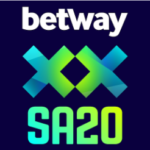 Brand spend on advertising and sponsorships last year totalled a hefty R45-billion investment into the South African market, signalling it as the biggest marketing investment for most brands. However, while spend figures are up from 2016, growth is still muted (below inflation) with brand investment often one of the first costs to be cut when budgets are constrained.
Brand spend on advertising and sponsorships last year totalled a hefty R45-billion investment into the South African market, signalling it as the biggest marketing investment for most brands. However, while spend figures are up from 2016, growth is still muted (below inflation) with brand investment often one of the first costs to be cut when budgets are constrained.
 This was the view of Nielsen South Africa Watch (Media) MD Terry Murphy speaking at a recent Nielsen Consumer360 event. “The focus on marketing optimisation is not new but each year we have to get a bit smarter in how we deal with the increasing complexity and challenges arising from ongoing media fragmentation and changes in consumer behavior, to make every interaction and rand spent count – sheer value does not automatically equate to quality or efficiency.
This was the view of Nielsen South Africa Watch (Media) MD Terry Murphy speaking at a recent Nielsen Consumer360 event. “The focus on marketing optimisation is not new but each year we have to get a bit smarter in how we deal with the increasing complexity and challenges arising from ongoing media fragmentation and changes in consumer behavior, to make every interaction and rand spent count – sheer value does not automatically equate to quality or efficiency.
“In fact, when we look at the Top 10 advertisers (FMCG, Retail, Financial Services and Mobile) in South Africa, we see that four of the players in that group have reduced their advertising investment but ultimately, it’s not about whether budgets are growing or declining but rather that the budget that is available is being used to generate maximum returns. This is due to the fact that the same budget, if deployed smartly, can yield returns multiple times that of an average media execution.”
Rising competition for consumer attention
At a global level, consumer behaviour continues to evolve with a rise in demand for convenience, evidenced by an increase in on-the-go (mobile) and time shifted viewing. However, even as consumers become more immersed in seeking information their attention spans are declining resulting in 63% switching channels when an advert comes on. Multi-tasking while viewing is also on the rise, be it time spent on social media or browsing the web. These factors all highlight the need for brands to vary their media tactics to optimise their advertising investment and effectiveness across multiple platforms.
Murphy elaborated that consumers in South Africa are particularly enthusiastic, early adopters of technology, with many consumers accessing the internet without a personal computer and 55% of South Africans accessing the internet from home via mobile (3G etc) compared to only 3% via broadband (Source: Establishment Survey Jun-Dec 2017). “We have skipped the second screen and moved straight to mobile devices, so you need to reach and interact with your consumers where they are.” revealed Murphy.
Make every Rand count!
Murphy said that return is higher on digital but digital execution is difficult. “With conventional media, you are dealing with a finite set of options whereas in digital you have thousands of sites and platforms vying for your ‘ad dollar’. One needs to understand how different brand campaigns for different platforms perform, using comparable measurement data. More importantly, one needs to understand which factors influence the ROI that will help stretch your media budget.”
According to a Nielsen analysis which tracked the campaigns of 17 top brands over three years in South Africa, it was found that digital advertising return on investment leads the way at R2.30 per rand spent when compared to Television at R1.30 and three times that of radio.
However, Murphy said that despite the evolving media landscape, the reality remains that television is dominant in South Africa commanding close to 57% share of spend. Digital is, however, becoming more influential as more brands incorporate metrics to master their execution and sometimes commit one third if not more of their media budget online.
Sponsorships evolve
Along with advertising investment, a sizeable part of marketing investment is in brand sponsorships. “Previously, when it came to sports sponsorship, brands would buy visibility with relatively small or quantifiable expected returns. Now, brands are expecting to be partners and require integration across multiple touchpoints. As a result, sponsors and rights holders can expect to work towards shared objectives and mutual benefits, getting more visibility with event activations, influencer promotions, social integration and increased interaction, all measured in sales outcomes, publicity and engagement,” explained Murphy.
Sponsorship activation is also extending beyond the property or event itself. Brands which explore fans’ lifestyles are discovering a range of occasions for broader activation.
Murphy points out; “Brands need to maximise their reach and impact, converting fans to consumers at every opportunity within their broader lifestyle”
As brand involvement in sponsorship advances there will also be new opportunities for brands and properties. “Smaller brands and non-sports related brands will find that sponsorships can work well for them. Not only the big brands with big budgets can benefit as smaller, niche sports teams or events will provide focused and effective opportunities to reach a brand’s super consumers.”
“With new avenues for marketers in advertising and sponsorship, brands can achieve more with less, while utilising conventional media as their base and strategising for a more focused digital reach,” concluded Murphy.
- MRF Unveils Latest MAPS® Data - 20th February 2025
- The BRC announces changes to the board and updates for 2025 - 17th December 2024
- Top 50 DSTV TV programmes – October 2024 - 12th November 2024




